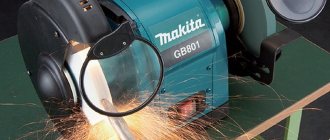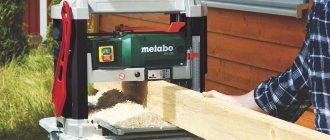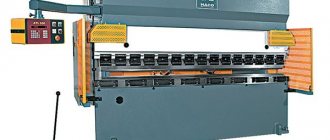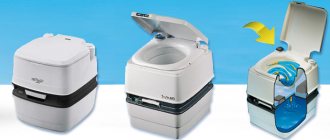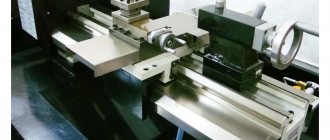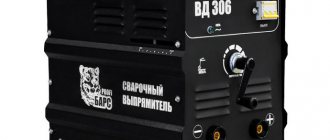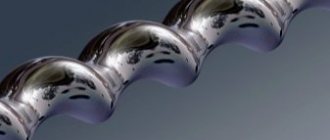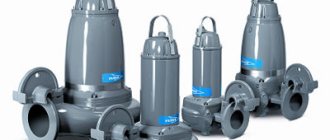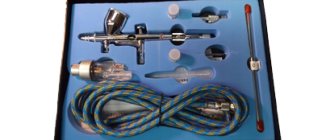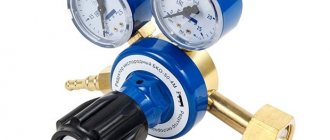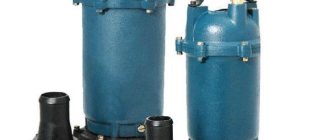A sheet bending machine is an easy-to-use and common piece of equipment that is widely found in large enterprises or private workshops. Devices of this type make it possible to do without welding work at many stages; they are indispensable in the manufacture of canopies, trims, ebbs, panels and boxes.
Bending metal of any complexity in Moscow and the Moscow region
Metal bending is possible using various methods, hot and cold. The most common method is the transformation of cold products on bending machines. The manual method is used quite rarely; it is used for bending thin sheet metal up to 0.6 mm thick. Automatic bending methods:
- On a hydraulic press
(universal air). A metal strip (up to 10 mm thick, up to 6 m long) is installed on the lower table with the matrix. The product of the desired shape is obtained due to the action of the punch directed from above to the required depth. - According to the matrix.
The technology is characterized by increased accuracy and is used when processing sheet metal up to 5 mm, deforming the workpiece at an angle of less than 90 degrees. - Using a rotating beam.
Used for bending sheets up to 1 mm to bend products in different directions. - Sliding processing.
When carrying out the procedure, a separate tool is used to prepare each thickness of workpiece.
Metal bending ensures a constant structure of the metal plate in the bend areas. The thickness of the sheet metal can reach 12 mm.
Varieties
There are 4 main types of sheet bending machines, differing in design and other characteristics. Let's look at each type of equipment.
Manual
Manual sheet bender MOBIPROF
Manual sheet benders are used in piece production or for the manufacture of several products. The equipment is activated by operator effort.
Manual machines:
- They can work with rolled products with a thickness of 0.7-1 mm.
- They do not consume electricity.
- Can be used in the production of large-sized parts.
The permissible bending angle is up to 1550. The machines are well suited for small workshops, workshops for the production of seam roofing paintings, air ducts and ventilation pipes.
Segmental
Segment bending machine
Segment benders are a type of manual machines. The equipment is equipped with bending segments of the required shape. The equipment is attached to a rotating beam; if necessary, the segment can be easily changed.
Segment bending machines:
- Reconfigure quickly.
- Can be used in the production of parts of complex shapes.
- Easy to operate and maintain.
The pneumatic compensator allows you to increase the operator’s effort; the machines can work with rolled products up to 1.5 mm thick. The permissible bending angle is up to 1350.
Electromechanical
Electromechanical sheet bending machine
An electric motor with a gearbox or frequency converter is used to drive machine tools. The scope of application of the equipment is serial production of rolled metal products.
Electromechanical machines:
- They have high performance.
- They work with steel sheets with a thickness of 3-4 mm.
- Can be equipped with program control units.
Replacement tool steel accessories are supplied included. Electrical equipment makes it possible to produce products of complex shapes and perform bending at an angle of up to 1400.
Hydraulic
Hydraulic sheet bending machine MOBIPROF
Hydraulic pumps are used to drive such machines. The hydraulic system is capable of developing significant force and processing workpieces at high speed. The scope of application of hydraulic machines is large-scale and mass production.
Equipment:
- Can process thick rolled metal up to 4 mm.
- Ensures 100% repeatability of manufactured products with a sample.
- Cuts finished parts.
A program control system is available as an option; hydraulic machines can be fully automated.
Metal bending services
Our company provides sheet metal bending services in Moscow. When bending metal, modern equipment is used, the use of which allows everything to be carried out with maximum precision. Sheet metal bending is fully automated, which greatly speeds up and simplifies the process.
The cost of bending sheet metal depends on the thickness and length of the product. The shape of the part, the type of steel, the features of the bending contours, etc. also play an important role.
The technology allows you to form products of the required sizes and shapes from sheets. By bending, you can most easily give the material the desired shape. The method is an easier to perform and inexpensive alternative to welding. The choice of technology depends on the material used and the requirements for the resulting product. Before the procedure, calculations are made using a special formula.
The automated method allows you to give workpieces the desired shape without the use of welding equipment. The main advantage of the bending technique is the absence of seams, which improves the appearance and increases the strength of products. The bending method speeds up the production process. As a result of bending, the weight of products and metal consumption are significantly reduced, labor costs and production costs are reduced, and profitability increases.
Range of sheet bending equipment
All kinds of bending machines of various types are available for sale, differing in their functional characteristics, size, weight, power and price range of equipment costs. The consumer is offered machines from both domestic and European manufacturers. You can purchase equipment manufactured in Western countries.
At the same time, domestic bending machines are in no way inferior in their quality characteristics to their foreign analogues, and in some cases even surpass them.
Metal sheet bending price
| Bending length, mm | 100 | 200 | 500 | 1000 | 1500 | 2000 | 2500 |
| Sheet thickness, mm | Price for bending sheet metal (minimum order from 100 bends) | ||||||
| 0,8 — 1 | 9 rub. | 11 rub. | 16 rub. | 29 rub. | 40 rub. | 50 rub. | 76 rub. |
| 1,2-1,5 | 9 rub. | 11 rub. | 17 rub. | 30 rub. | 40 rub. | 50 rub. | 76 rub. |
| 2 | 9 rub. | 11 rub. | 17 rub. | 30 rub. | 42 rub. | 51 rub. | 77 rub. |
| 2,5 | 9 rub. | 11 rub. | 19 rub. | 31 rub. | 44 rub. | 51 rub. | 77 rub. |
| 3 | 9 rub. | 13 rub. | 20 rub. | 32 rub. | 49 rub. | 56 rub. | 95 rub. |
| 5 | 14 rub. | 18 rub. | 25 rub. | 44 rub. | 69 rub. | 88 rub. | 139 rub. |
| 6 | 15 rub. | 21 rub. | 28 rub. | 53 rub. | 81 rub. | 106 rub. | 166 rub. |
| 8 | 17 rub. | 21 rub. | 33 rub. | 59 rub. | 105 rub. | — | — |
| 10 | 19 rub. | 23 rub. | 38 rub. | 66 rub. | — | — | — |
| 12 | 23 rub. | 28 rub. | 45 rub. | — | — | — | — |
Machine selection
The main thing to do when choosing a sheet bending machine is to pay special attention to its technical characteristics . It is important to take into account that the greater the number of works included in the list, the higher the load on the equipment will be. It is better if the number of jobs is not very large, which will increase the service life of the machine and the speed of work.
Which machine to choose can be guided by the parameters specified in the drawing of the product that is planned to be produced using the equipment. The following parameters are taken into account:
- the thickness of the metal from which the product is planned to be made;
- sheet size (length and width) that will be processed;
- complexity and geometry of the object.
When choosing a sheet bending machine, you need to remember that it is better to purchase a high-quality, expensive item so that it lasts longer and does not fail at the most inopportune moment. Machines with more power will reduce the time spent on work than cheaper and less functional analogues.
Where is sheet metal bending used?
This metal sheet processing technology is widely used in various fields due to its advantages. Bent elements, while having the same strength as solid rolled pipes and profiles, are lightweight. Areas of application for bending:
- construction sector (roofing, components, ventilated facades);
- mechanical engineering;
- transport industry (cladding);
- metal profiles;
- production of sliding furniture;
- parts of equipment housings, household appliances.
Design features of the bending machine
Equipment for bending metal sheet blanks has a rather intricate design. The machine is made up of parts:
- special table for back support. A metal sheet is placed on it. The workpiece will move along it in the desired direction. There is a special bender and a sharp cutter on the supporting supports;
- roller blade for cutting. This knife is usually very well sharpened and durable so that it can easily withstand the load and easily cut through a hard metal sheet;
- stops located in front - used to regulate the width of the cut being made;
- height parameter fixers. They adjust the height of the workpieces.
The length parameters and the size level of the maximum thickness of the product to be processed differ for different types of machines.
Defects and difficulties when bending
During the deformation of metals, defects may appear. The most common are oblique bends, mechanical damage to the surface. This phenomenon occurs due to errors when marking or securing workpieces above/below the marking line. A common mistake when bending is also considered to be rupture (crack) of the metal. It occurs due to insufficient plasticity of the material. Bending of thin sheet metal is most often susceptible to this type of defect, which is why it often has to be done manually. Another common bending defect is dimensional irregularities. It manifests itself when there is a shortage or excess of sheet at the ends of the part, which occurs when the calculation of the length of the workpieces is incorrect.
Kinds
In industry and construction, machines are used to give the desired shape to metal products, namely:
- a manual machine is a small-sized technique. This makes it easy to rearrange. Due to its light design and small number of functions, it cannot be used for large-scale work. With its help, copper parts, steel or galvanized aluminum workpieces are shaped. Working with this machine does not require special training, but it takes a lot of time and requires a lot of effort;
- mechanical machines. They function by supplying power from a rotating flywheel that is started to spin in advance;
- Electromechanical structures operate using an electric motor, a special device - a gearbox - using belts and a drive. Machines of this type are more powerful compared to mechanical equipment and more productive;
- hydraulic structures. These machines shape metal workpieces using a special cylinder arrangement;
- pneumatic machines perform work using pneumatic cylinders that bend sheet blanks with special paint applied to them;
- electromagnetic structures are used to create metal boxes. Metal blanks are bent under the influence of a powerful electromagnet. Therefore, they can involve processes that require enormous amounts of effort and energy;
- Mobile sheet benders are small machines. Due to the design properties, they can be used to process workpieces and parts immediately at the site of future assembly of parts.
Arc bending machines
The roller bender, like the press and the rotary beam, are designed for bending in a straight line. But it is often necessary to bend the sheet in an arc, for example, in the manufacture of gutters, drainpipes and ventilation pipes. For this type of bending, a three-roll plate bending machine is used. Its working part consists of three parallel rotating shafts - two lower support shafts and an upper pressure shaft.
The radius under which the three-roll sheet bending machine will produce profile parts depends on the distance between the support shafts and the vertical movement of the clamping force. The industrial three-roll sheet bender is driven by an electric motor, and the pressure shaft is moved using hydraulic cylinders.
Manually driven mechanical machines are also built using the three-roll bending system. It’s not difficult to make such a tool yourself if you use ready-made drawings from the Internet or develop the design yourself, using one of the industrially manufactured machines as an example.
The most complex and expensive is the electromagnetic sheet bender, in which the pressure bar is secured not with screws or spring fasteners, but with the help of a powerful electromagnet. Otherwise, the principle of its operation repeats the action of a sheet bending machine with a rotary beam. An electromagnetic sheet bender greatly reduces the time of preparatory work - just press a button and the sheet is firmly fixed.
The electromagnetic sheet bender is powered to a regular home network with a voltage of 220 V and can operate in any conditions. More powerful industrial machines are installed in workshops and connected to the industrial network, many of them are equipped with CNC and automatic sheet feeding.
Installation and maintenance of the bending machine
To ensure that no problems arise during the operation of a bending machine of any kind, and that they do not break prematurely and spoil the workpieces, you need to follow several rules when operating them:
- To prevent equipment elements from corroding, it is used in a room that maintains positive temperatures (up to 35 degrees). If the temperature is higher, the lubricant used on the machine parts may leak. At low temperatures it can freeze, and thus the operation of the equipment will be disrupted and it will quickly fail;
- sheet bending structures should not be located in places where the humidity level is above 75%;
- if the bending machine was purchased in winter, before assembling it, you need to leave its elements in a warm room so that they warm up to room temperature, and only then begin assembly and work. Failure to comply with this rule may damage the device;
- When assembling, be sure to carefully read the instructions and check the package contents.
Like other equipment, sheet metal bending machines require proper care:
- parts of the sheet bending structure should be cleaned with a soft cloth and wiped with a special solvent after each use;
- It is recommended to periodically clean the equipment using compressed air (once a month);
- metal parts should be lubricated with liquid machine oil after cleaning;
- Once a month it is also recommended to apply lubricant to some components and frames.
If you follow these rules, you can extend the life of your bending machine for many years.
How different types of devices work
With the help of modern technologies, it is possible to transform metal blanks of different sizes into high-quality products of the required configuration. Each type of equipment is designed for the production and processing of different types of parts.
Using a hand press
Such units are distinguished by the maximum depth of sheet feeding, its thickness and the length of the bend. The operating principle of the hand-held device is quite simple. Using a special beam, a small metal sheet is pressed to the working surface. The part is bent by a bending beam at the set angle.
It should be noted that the bending thickness of these metal bending machines is no more than 2 millimeters. That is why such devices are light in weight, and they can be used not only in enterprises, but also in home workshops.
Using hydraulic machines
These devices greatly facilitate sheet-bending work, because the energy carrier is a special liquid. The plunger is pushed out of the cylinder under high pressure. Due to this, the crossbar with the striker begins to move. There is a strong emphasis on the metal sheet, and it bends.
Hydraulic sheet benders are used for bending iron along the entire length of the working surface or for strong drawing of a metal profile. Due to the precise adjustment of the cylinders, the machines are distinguished by high productivity and quality of products. When working with such equipment, it is possible to control the speed and movement of the slider.
Experts identify the following areas of use of hydraulic equipment:
- production of additional parts;
- production of various air ducts;
- rolling large roof areas or signs;
- finishing of workshops.
Compared to manual sheet metal bending machines, hydraulic devices have enormous productivity. They can also work with metal workpieces of large thickness.
